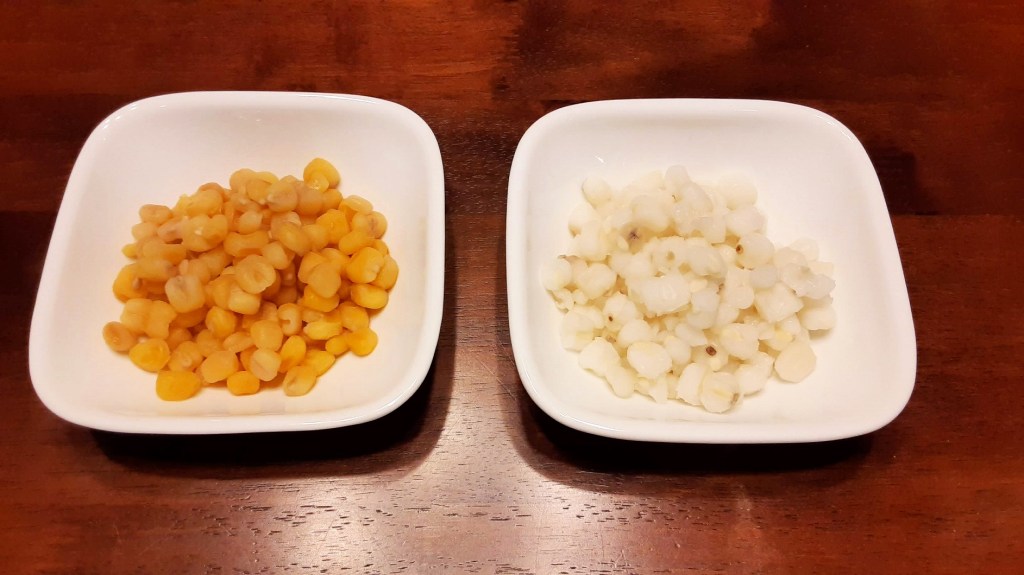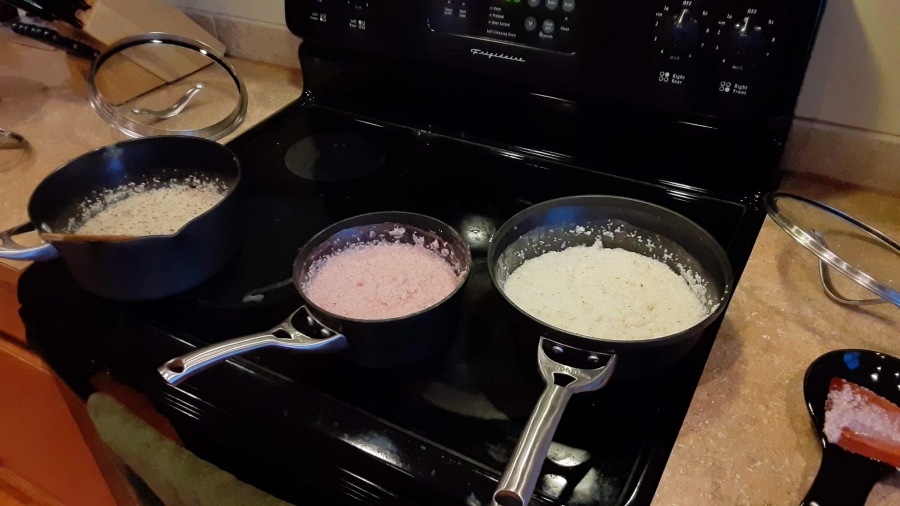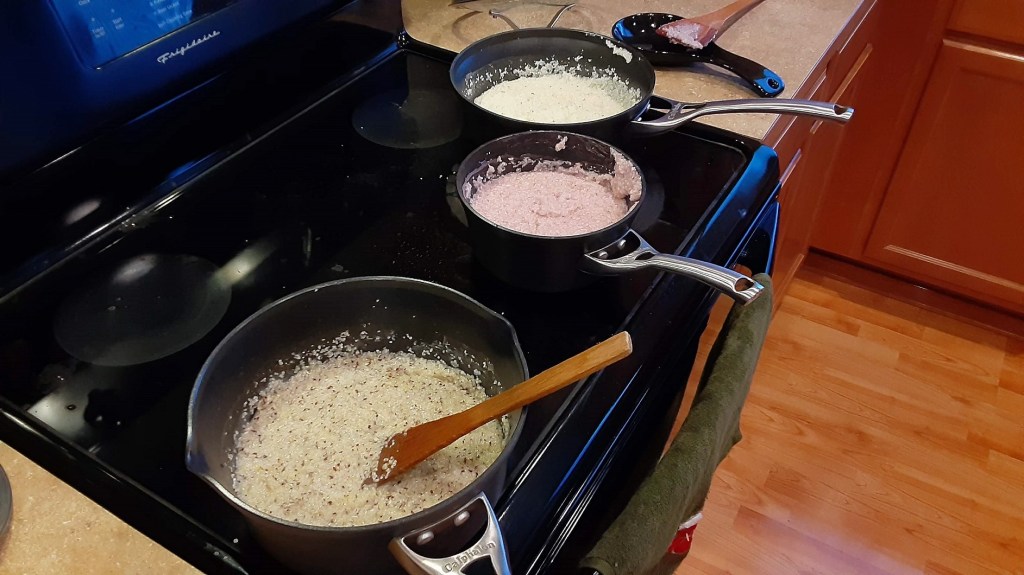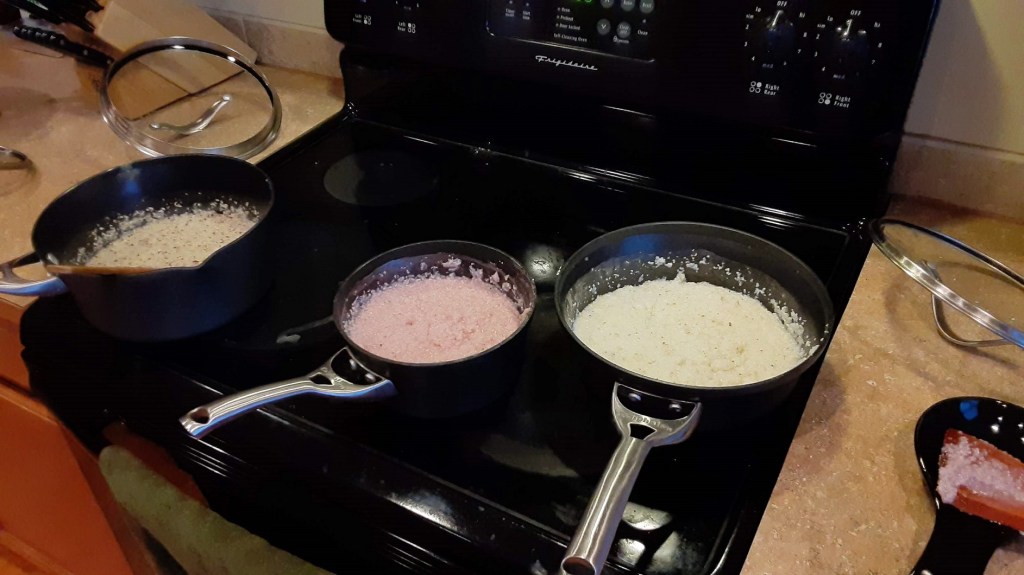A couple years ago I drew the name of my brother-in-law’s girlfriend for the family gift exchange. She had a number of books on her Christmas list and being the good bibliophile I am, I bought her all of them. One of the books was Grits: A Cultural and Culinary Journey Through the South by Erin Byers Murray. Having read and enjoyed it, Molly loaned it to me last Christmas.
It took me the entire year to get around to reading it, which is saying something given we’ve been ‘staying home, staying healthy’ for the majority of 2020. Nevertheless, it finally made its way to the top of my reading list.
I didn’t love the author’s writing style and the way she organized the content, but I did enjoy learning the historical and cultural journey that’s led to our understanding and consumption of grits today. I also appreciated that she included multiple grit recipes throughout. Most were contributed by her interviewees: small scale, stone-ground mill owners and restauranteurs who have embraced grits as part of their repertoire.
A few things I learned/found interesting:
- Similar to Michael Twitty’s reflections in The Cooking Gene, there was a significant discussion about heirloom varietals of corn and the tedious restoration of certain types, like Jimmy Red, to broader production through time, talent, and attention. I know very little about the genetic makeup of plants and was fascinated to learn how seeds used to be traded and how some people still have certain strains of ancient corns growing in a handful of rows in their backyard that the world assumed were extinct.
- This interest and revival of these heirloom varietals has allowed small farms to carve out a niche and more successfully compete with the ‘industrial food complex.’ This, in turn, has opened a door to unique downstream opportunities – millers converting these forgotten corns into grits, cornmeal and other products; distillers using these grains to create new styles of whiskey; chefs designing new dishes inspired by all of these items and more.
- At the time of publication (2018) there were very few women-owned mills. Two the author discussed were Delta Grind and Original Grit Girl. There was an entire section dedicated to the original ‘grit slingers’ and women’s role in the planting, production, and preparation of corn and grits over time.
- I also appreciated the author’s focus on the importance of maize and its byproducts to the indigenous people in what is now North America and the political nature of maize/corn/grits over time.
In addition to inspiring me to learn more about all of the above, this book made we want to eat a giant bowl of grits! I didn’t grow up regularly eating grits and don’t often stumble upon them on the menu of many restaurants in the Pacific Northwest (although Toulouse Petit, which I profiled here, got a shout out in the book!). After all of the criticism of big box instant and quick grits in the book, I couldn’t bring myself to purchase those. I asked Molly where she and Mark buy their stone-ground grits and placed an order for future consumption.
In the meantime, I decided to follow the trail of another corn byproduct discussed in the book – hominy! I remember eating it at my grandparents’ house growing up but couldn’t remember the last time I had it.
Imagine my surprise when I found hominy made from white and yellow field corn at the store! I bought both so I could do a taste test. White was the CLEAR winner in my book. What a funny reintroduction of a food from my past – I’ll have to start rotating it into our meal planning moving forward!

Despite the many other headaches I’ve been experiencing as of late thanks to the U.S. Postal Services, my grits from Edisto Island, South Carolina-based Marsh Hen Mill (formerly Geechie Boy Mill, as still referenced on their packaging) arrived on schedule.
I decided to do a full on taste test of their basic white grits, their special Jimmy Red grits (discussed at length throughout the book), and their novelty ‘unicorn’ grits made from the random red corn kernels that sometimes appear on golden ears of corn.
My observations:
- Cooking Time: The white and unicorn grits were done at 20 minutes but the Jimmy Red took closer to 30 minutes.
- Aesthetic: The white grits were what you would expect if you’ve ever had white grits. The Jimmy Red grits had a variety of colors, including distinctive flecks of red. The unicorn grits were undeniably pink!
- Texture: I didn’t notice a difference in texture from one to the next. I cooked them all the same way, at the same time, stirring constantly.
- Taste: Here is where there was significant departure between the varietals. Tasting note: Each pot was salted with the same amount prior to boiling, and I did not add any butter or salt to the finished grits prior to tasting.
- The white grits tasted familiar – they had a definitive corn flavor and were really good. I tried them later with a little bit of butter and actually preferred them without.
- The Jimmy Red ended up being my favorite. They were similarly corn flavored but it was more earthy than sweet – very different from the white grits and more flavorful.
- The unicorn grits had a very mild and delicate flavor – I had to really pay attention for it as I ate them. Had I been rushed rather than actually taste testing each one, I would have missed it all together / I would have found them bland. They were much improved later on when I ate them with a little sliver of butter mixed in.
My ranking: Jimmy Red, white, unicorn.
Brian’s ranking: White, Jimmy Red, unicorn.
Of course now we want to try yellow/golden and blue to see where those rank. And there are many, many more varietals and many, many other small millers where I’d like to look into ordering stone-ground grits in the future.
I’ll probably check out some of the female-owned operations since they are few and far between to spread the (monetary) love. For now, I’ve got three decent sized bags of grits in my fridge to work through first – and I look forward to it!
Happy literary & culinary travels!




